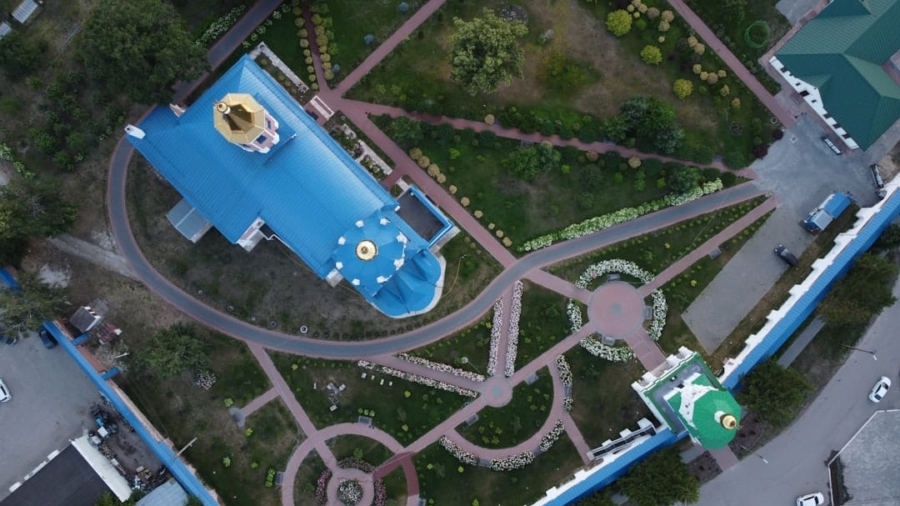Augmented Reality (AR) has emerged as a transformative technology, reshaping various industries, including entertainment and leisure. In the realm of theme parks, AR offers a unique opportunity to enhance guest experiences by blending the physical world with digital elements. This innovative technology allows visitors to interact with their surroundings in ways that were previously unimaginable, creating a more immersive and engaging environment.
As theme parks strive to differentiate themselves in an increasingly competitive market, the integration of AR into attractions has become a focal point for enhancing visitor satisfaction and engagement. The allure of AR lies in its ability to create a seamless interaction between the real and virtual worlds. By overlaying digital information onto physical environments, AR can provide guests with enriched narratives, interactive gameplay, and personalized experiences.
This technology not only captivates the imagination of visitors but also encourages them to explore attractions in new and exciting ways. As we delve deeper into the evolution and impact of AR in theme parks, it becomes evident that this technology is not merely a trend but a significant advancement that has the potential to redefine the theme park experience.
Key Takeaways
- AR technology has revolutionized theme park attractions by offering immersive experiences to guests.
- The evolution of AR technology in theme parks has led to more interactive and engaging attractions.
- AR enhances theme park attractions by creating immersive experiences that blur the lines between the physical and digital worlds.
- AR has a significant impact on guest engagement and interaction, providing a more personalized and interactive experience.
- Implementing AR in theme park attractions comes with challenges and limitations, such as technical issues and cost considerations.
The Evolution of AR Technology in Theme Parks
The journey of AR technology in theme parks can be traced back to the early 2000s when the concept began to gain traction in various forms. Initially, AR applications were limited to simple overlays and basic interactions, often relying on handheld devices or stationary kiosks. However, as mobile technology advanced, particularly with the proliferation of smartphones equipped with powerful cameras and sensors, the potential for AR in theme parks expanded dramatically.
This evolution has allowed for more sophisticated applications that can engage guests in real-time and in dynamic environments. One of the pivotal moments in the evolution of AR within theme parks was the introduction of mobile apps that utilized AR features. For instance, Disney’s “Play Disney Parks” app allows guests to interact with their surroundings through their smartphones, unlocking games and experiences that enhance their visit.
This shift from static displays to interactive mobile experiences marked a significant turning point, enabling parks to create personalized adventures tailored to individual preferences. As technology continues to advance, the integration of AR is becoming more seamless, with attractions increasingly incorporating wearable devices and smart glasses that further enhance the immersive experience.
Immersive Experiences: How AR Enhances Theme Park Attractions

AR technology has the remarkable ability to transform traditional attractions into immersive experiences that captivate guests on multiple levels. By integrating digital elements into physical rides and environments, theme parks can create narratives that engage visitors beyond mere observation. For example, during a roller coaster ride, AR can overlay visual effects that simulate flying through a fantasy landscape or battling mythical creatures, making the experience more thrilling and memorable.
This fusion of storytelling and technology allows guests to feel as though they are part of an unfolding adventure rather than passive participants. Moreover, AR can enhance themed environments by providing interactive elements that encourage exploration and discovery. Imagine walking through a themed area where digital characters come to life, guiding guests through quests or challenges that require them to solve puzzles or find hidden objects.
Such experiences not only entertain but also foster a sense of agency among visitors, allowing them to shape their own narratives within the park. This level of interactivity is particularly appealing to younger audiences who are accustomed to engaging with digital content in their daily lives, making AR an essential tool for attracting and retaining this demographic.
The Impact of AR on Guest Engagement and Interaction
The integration of AR technology in theme parks has significantly altered the landscape of guest engagement and interaction. By providing opportunities for personalized experiences, AR fosters a deeper connection between visitors and the attractions they encounter. For instance, guests can use AR-enabled apps to unlock exclusive content or receive tailored recommendations based on their interests and preferences.
This level of customization not only enhances satisfaction but also encourages repeat visits as guests seek to explore new facets of their favorite attractions. Furthermore, AR facilitates social interaction among guests, creating shared experiences that enhance group dynamics. Many AR applications are designed for collaborative gameplay, allowing friends and families to work together to complete challenges or compete against one another in real-time.
This social aspect is particularly important in theme parks, where visitors often attend with companions. By encouraging teamwork and friendly competition, AR enhances the overall enjoyment of the park experience, making it more memorable for all involved.
Challenges and Limitations of Implementing AR in Theme Park Attractions
Despite its numerous advantages, the implementation of AR technology in theme parks is not without challenges and limitations. One significant hurdle is the need for robust infrastructure capable of supporting high-quality AR experiences. This includes reliable Wi-Fi networks, sufficient bandwidth, and advanced hardware capable of processing complex graphics in real-time.
Parks must invest heavily in these technologies to ensure that guests can access seamless AR experiences without interruptions or technical glitches. Additionally, there are concerns regarding user accessibility and inclusivity. Not all guests may have access to smartphones or be comfortable using technology during their visit.
Theme parks must consider how to provide engaging experiences for all visitors, including those who may be less tech-savvy or have disabilities that limit their ability to interact with digital content. Striking a balance between high-tech experiences and ensuring that all guests feel included is a critical challenge that parks must address as they integrate AR into their attractions.
Case Studies: Successful Examples of AR Integration in Theme Parks

Several theme parks around the world have successfully integrated AR technology into their attractions, showcasing its potential to enhance guest experiences. One notable example is Universal Studios’ “The Wizarding World of Harry Potter,” where guests can use interactive wands equipped with sensors to cast spells at various locations throughout the park. This immersive experience combines physical props with digital feedback, allowing visitors to engage with the magical world in a tangible way.
Another compelling case study is Disneyland’s “Star Wars: Galaxy’s Edge,” which features an innovative AR experience called “Millennium Falcon: Smugglers Run.” In this attraction, guests take on roles as pilots, engineers, or gunners aboard the Millennium Falcon while interacting with holographic characters and environments projected through AR technology. This multi-layered experience not only immerses guests in the Star Wars universe but also allows them to influence the outcome of their mission based on their performance during the ride.
The Future of AR in Theme Park Attractions: Trends and Innovations
As technology continues to evolve, the future of AR in theme parks looks promising, with several trends and innovations on the horizon. One emerging trend is the use of artificial intelligence (AI) alongside AR to create even more personalized experiences for guests. By analyzing visitor data and preferences, AI can tailor interactions and recommendations in real-time, enhancing engagement and satisfaction levels.
Additionally, advancements in wearable technology may play a significant role in shaping the future of AR experiences in theme parks. Smart glasses or headsets could provide guests with hands-free access to augmented content while allowing them to fully immerse themselves in their surroundings. This could lead to entirely new forms of storytelling and interaction within attractions, further blurring the lines between reality and fantasy.
Moreover, as sustainability becomes an increasingly important consideration for theme parks, AR could offer solutions for reducing physical infrastructure while still delivering engaging experiences.
The Potential of AR to Transform the Theme Park Experience
The integration of augmented reality into theme park attractions represents a significant leap forward in how visitors engage with entertainment environments. By enhancing storytelling, fostering interactivity, and personalizing experiences, AR has the potential to revolutionize the way guests perceive and enjoy theme parks. As technology continues to advance and evolve, it is clear that AR will play an integral role in shaping the future landscape of these beloved destinations.
As theme parks navigate the challenges associated with implementing this technology, they must remain committed to creating inclusive experiences that cater to diverse audiences. The successful case studies already emerging demonstrate that when executed thoughtfully, AR can elevate guest engagement and satisfaction levels significantly. With ongoing innovations on the horizon, it is an exciting time for both theme park operators and visitors alike as they explore the limitless possibilities that augmented reality has to offer in transforming the theme park experience into something truly extraordinary.
As theme parks integrate AR technology to create more immersive and interactive environments, it’s interesting to draw parallels with other industries that are also leveraging technology to enhance user engagement. For instance, the article What We Can Learn from Instagram’s Founders’ Return to the Social Media Scene explores how technological advancements and innovative thinking are reshaping the social media landscape. Both theme parks and social media platforms are utilizing cutting-edge technology to captivate and retain their audiences, highlighting a broader trend of digital transformation across various sectors.
FAQs
What is AR?
AR stands for Augmented Reality, which is a technology that superimposes digital information such as images, videos, or 3D models onto the real world environment.
How is AR used in theme park attractions?
AR is used in theme park attractions to enhance the visitor experience by overlaying digital elements onto the physical environment. This can include interactive games, virtual characters, or immersive storytelling.
What are the benefits of using AR in theme park attractions?
Using AR in theme park attractions can enhance the overall experience for visitors by providing interactive and immersive elements. It can also help to create unique and memorable experiences that set the attraction apart from others.
Are there any drawbacks to using AR in theme park attractions?
Some potential drawbacks of using AR in theme park attractions include technical issues, such as device compatibility and connectivity issues. There may also be concerns about the impact of prolonged AR use on visitors, such as eye strain or disorientation.
What are some examples of theme park attractions that use AR?
Some examples of theme park attractions that use AR include interactive scavenger hunts, virtual reality roller coasters, and immersive storytelling experiences that incorporate AR elements.
How is AR technology evolving in the context of theme park attractions?
AR technology is constantly evolving, and in the context of theme park attractions, this means that attractions can become even more immersive and interactive. This could include advancements in AR hardware, software, and content creation.

